
Achieve Fitness Goals Faster with a Personalized Workout Plan – Here’s How!
One-size-fits-all workout routines can work for general fitness, but if you want to make real progress toward specific fitness goals, a personalized workout plan is essential. This type of plan considers your unique fitness level, goals, body type, and lifestyle, allowing you to train effectively and prevent injury.
By building a workout plan that’s tailored to you, you can avoid the common pitfall of hitting a fitness plateau while achieving better, faster results. A personalized plan not only maximizes efficiency but also keeps you motivated by showing consistent progress that’s aligned with your aspirations. However, achieving your fitness goal still has a lot to do with the type of gym you visit. I’d recommend you check out Thara Fitness Studio Abuja for the best workout plan
Setting Clear and Realistic Fitness Goals
Before designing a personalized workout plan, defining clear and realistic fitness goals is crucial. According to research, setting specific, measurable goals improves adherence and motivation, making it easier to stay committed over the long term. For instance, goals like “I want to lose 10 pounds in three months” or “I want to improve my bench press by 20% over the next eight weeks” are specific, measurable, and actionable.
Tips for Defining Goals:
- Be Specific: Avoid vague objectives like “getting fit.” Instead, target precise outcomes, such as “losing weight,” “building muscle,” or “enhancing endurance.”
- Break Down Big Goals: If you aim to lose 20 pounds in six months, break it into smaller steps, like losing 3–4 pounds per month. These manageable targets keep you motivated.
- Align with Lifestyle: Make sure your goals fit within your schedule, ensuring you can consistently work toward them without major disruption to your daily life.
Assessing Your Fitness Level to Customize Your Plan
A self-assessment provides a baseline for your current fitness level, which is essential for creating a safe and effective workout plan. Testing your strength, mobility, and endurance highlights areas where you excel and where you need improvement, informing you on the right starting point.
Self-Assessment Techniques:
- Mobility Tests: Assess your joint mobility with moves like the deep squat test or shoulder mobility exercises. Limited mobility may indicate areas that require attention before heavy lifting or high-impact moves.
- Strength and Endurance Tests: Standard tests like push-ups, planks, and timed runs (e.g., the mile run) help establish benchmarks for strength and cardiovascular endurance.
- Listening to Your Body: Pay attention to any discomfort or tightness that might limit movement. Easing into exercises at a manageable pace is essential to avoid injury and foster steady progress.
Choosing the Right Types of Exercises for Your Goals
Once goals are set, you can select exercises that specifically target these objectives. If your focus is weight loss, high-intensity interval training (HIIT) combined with resistance exercises may be ideal, as HIIT burns more calories in less time. For muscle gain, strength training with compound exercises (like squats, deadlifts, and bench presses) is effective.
Suggested Exercises:
- Weight Loss: Include HIIT circuits, which alternate intense exercise and rest periods to maximize calorie burn.
- Muscle Gain: Incorporate free weights and compound lifts to target multiple muscle groups and increase strength.
- Endurance: Add activities like cycling, running, or swimming, combined with moderate-resistance exercises, to improve stamina.
Sample Workout Combinations:
- Balanced Strength and Cardio Routine: 3 days of strength training, 2 days of cardio, and 2 rest days per week.
- Flexibility Focus: Mix strength days with yoga or stretching sessions to improve mobility and recovery.
Structuring Your Weekly Workout Routine
An organized weekly routine not only supports progress but also prevents overworking certain muscles, allowing for adequate recovery. Studies indicate that balanced scheduling with rest days between intense sessions enhances strength gains and reduces injury risk.
Example Weekly Structure:
- Day 1: Upper Body Strength
- Day 2: Cardio (e.g., interval running)
- Day 3: Lower Body Strength
- Day 4: Rest or Light Yoga
- Day 5: Full-body strength (lighter weights or higher reps)
- Day 6: Cardio (e.g., cycling or swimming)
- Day 7: Rest and Recovery
This routine provides a balanced focus on strength, cardio, and flexibility while ensuring muscles have time to repair. If you want to Shed Fat and Build Strength, do this now
Tracking Progress and Making Adjustments Over Time
Tracking progress is essential to see how far you’ve come and to identify when adjustments are needed to keep advancing. Metrics like weight, body measurements, and performance improvements (e.g., lifting heavier or running faster) provide clear evidence of your progress.
Methods for Measuring Results:
- Weekly Measurements: Record changes in muscle size, waist circumference, or body weight for a fuller picture.
- Performance Metrics: Track the number of reps, weight lifted, or duration of cardio sessions to gauge improvements in endurance or strength.
- Adjust Based on Feedback: If you’re not seeing progress after four to six weeks, consider increasing the intensity or variety of your workouts.
Frequently Asked Questions
- How often should I work out?
The frequency of your workouts depends largely on your goals and current fitness level. For general fitness and health, most experts recommend aiming for 3–5 workout sessions per week. This gives you a good balance of activity and recovery time, which is essential for building strength, endurance, and flexibility. Within these 3–5 days, try to include a mix of cardio exercises (like running, cycling, or swimming), strength training (such as weightlifting or bodyweight exercises), and flexibility work (like yoga or stretching). This balanced approach can help improve heart health, build muscle, and increase flexibility while reducing the risk of injury.
If you’re aiming for more specific goals, like building muscle mass, training for a race, or improving athletic performance, you may need to adjust your routine. For example, strength-focused athletes often train four to six days a week, alternating muscle groups to allow for adequate recovery. It’s always wise to consult with a fitness professional or personal trainer if you’re new to exercise or working toward a specific goal.
2. How long should each workout be?
The length of your workout can vary depending on the type of exercise and your fitness objectives. Generally, workouts can range anywhere from 30 to 90 minutes. For a balanced strength training session, 45–60 minutes is usually ideal. This allows enough time for warm-up, multiple sets of exercises, and cool-down without overtaxing the muscles. High-Intensity Interval Training (HIIT), on the other hand, is designed to be shorter but highly effective. HIIT sessions typically last between 20 and 30 minutes, focusing on intense bursts of activity followed by short rest periods. This makes it a great option if you’re looking to burn fat and build endurance in a shorter time.
Cardio sessions can vary widely, too. Steady-state cardio (like jogging or cycling) can range from 30 to 60 minutes, while sprint intervals can be completed in as little as 15–20 minutes. If you’re short on time, remember that even a quick 20-minute workout can provide benefits, especially if you stay consistent.
3. Can I personalize a workout plan if I have a busy schedule?
Absolutely! One of the best parts about fitness is that it can be adapted to fit your lifestyle and schedule. If you have a busy day-to-day routine, consider opting for shorter, more intense workouts, like HIIT or circuit training, which can maximize your results in less time. You might also try splitting your workouts into two shorter sessions if that fits better into your day. For example, you could do 15 minutes of strength training in the morning and 15 minutes of cardio in the evening.
Another option is to add in some “mini-workouts” throughout the day. This might include a quick stretching session, a set of squats or lunges, or even a brisk walk on your lunch break. Many people find that these shorter bursts of activity are more manageable with a busy schedule and still contribute to overall fitness goals.
Customizing your plan allows you to stay active and make progress without feeling overwhelmed, so you can keep up with your routine consistently. Remember, it’s more about consistency and finding a routine that works for you than sticking to a rigid schedule.
Looking for the best gym in Abuja for your fitness goals? Here is a comprehensive list for you
Conclusion
A personalized workout plan is a powerful tool that transforms your fitness journey, making it more focused, achievable, and aligned with your unique needs. From setting specific goals to selecting exercises that directly support those objectives, creating a tailored plan is the most effective way to achieve faster, safer, and longer-lasting results.
By tracking progress and adjusting the plan as you grow, you’re empowered to continuously evolve and reach new fitness milestones.
